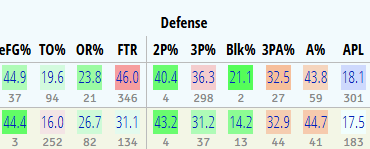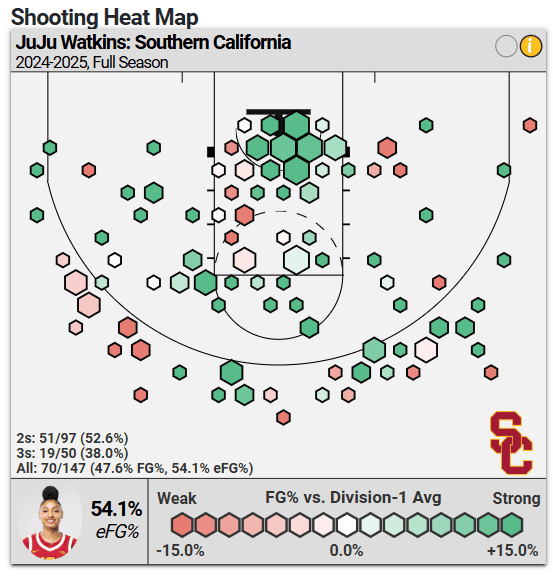The Main Characters of the 2024-25 College Basketball Season
A month into the season and just three short months away from March Madness, here are the people you need to know in college basketball—and why they’ll be important
We’re already a month into the college basketball season and just three short months away from the start of March Madness. With the holiday tournaments in the books and conference play ramping up across the country, let’s get to know the names that will dominate conversation throughout the 2024-25 season. Here are the main characters of college basketball—and everything you need to know about them.
Dan Hurley, Connecticut Coach
College basketball moves fast. Just a few months ago, UConn men’s coach Dan Hurley was the king of the sport. He was fresh off two national titles and had just turned down the Lakers head coaching job for a chance at a historic three-peat. Then the Huskies, who lost four NBA draftees and an All-American point guard this offseason, pulled off the wrong kind of three-peat, dropping back-to-back-to-back games against unranked opponents to finish in last place at the Maui Invitational. That led Hurley to vow to never participate in an early-season tournament again.
There isn’t a more dramatic coach in all of sports, and UConn’s early-season frustrations have Hurley on full tilt. He took a technical foul in overtime of a late November game against Memphis that swung that game in the Tigers’ favor and his badgering of referees has become a talking point across college basketball media. He called his team’s effort in a 35-point win over East Texas A&M “comically bad.” And after the Maui debacle, he said his players were buckling under “the burden of wearing a uniform after back-to-back [national titles].” It’s early, so every coach in the country is probably infuriated with their team’s execution right now, but Hurley seems to be fed up with everyone around him. This is how he reacted to a dumb foul by his center Samson Johnson in the first half of a game against Le Moyne:
Hurley is losing his shit on a nightly basis—but there’s a reason. The Huskies stink on defense—at least by Hurley’s high standards. They’re ranked 92nd in adjusted defensive efficiency, per KenPom, and Hurley called their performance on that end in Maui a “disaster.” Defending the 3-pointer has been the main issue. Opponents are shooting 36.3 percent from beyond the arc against UConn. That ranks 298th in the country, per KenPom. The Huskies are also fouling at a concerning rate and rank 346th in free throw rate allowed. Those are the two biggest by-the-numbers differences between this season’s defense and last season’s.

UConn has been fine on the other end of the floor—it ranks fifth in offensive efficiency after leading the nation last season—but after losing Tristen Newton, Stephon Castle, and Cam Spencer in the offseason, this year’s squad doesn’t have a go-to backcourt player. Highly touted freshman Liam McNeeley has done an admirable job replacing Spencer’s craftiness inside the arc, but he still has his freshman moments and has been targeted by opposing offenses on the other end. Solo Ball, who replaced Castle, has mostly been a jump shooter rather than the do-it-all player his predecessor was. Saint Mary’s transfer Aidan Mahaney, who was tasked with replacing the All-American Newton, has already lost his starting job after some early struggles. And while Alex Karaban, the lone holdover from last year’s starting five, is playing efficient basketball, he hasn’t been the dominant star UConn may need him to be if McNeeley doesn’t take a step up before league play starts.
Hurley has his work cut out for him, and it will be fascinating to track the evolution of this team throughout the season. If he gets them back into title contention after how things have started, we should induct him into the Hall of Fame in April. And even if he doesn’t, Hurley’s antics may be enough to keep us watching all season.
Cooper Flagg, Duke Forward
As a Maryland basketball fan who’s been programmed to hate Duke, I’m pained to admit that Cooper Flagg rules. He may look like your typical Duke villain, but he doesn’t play like one. The presumed no. 1 pick in next year’s NBA draft is a 6-foot-9 condor who studied Larry Bird tape growing up. He also went off in a scrimmage against Team USA before it won gold in Paris.
Flagg’s numbers on the season aren’t overly impressive. He’s averaging just 16.6 points and 8.6 rebounds on 43.5 percent shooting through eight games. But I implore you to ignore the numbers. They don’t do a good job of selling his game. Whenever the Blue Devils have needed a bucket, head coach Jon Scheyer has put the ball in his star freshman’s hands. Outside of an ugly ending in a November loss to Kentucky, that strategy has mostly worked out. And when Flagg has taken on top competition, he’s looked like the best player on the floor. That was true against Kentucky, Kansas, Arizona, and Auburn. Duke is only 2-2 in those games, but Flagg averaged 21.3 points, 8.5 rebounds, and 3.0 assists against those ranked opponents.
Flagg is a raw scorer who will have to work on his touch from beyond the arc at the next level, but the rest of his game is polished for a 17-year-old. All that time he spent studying Bird shows in his passing. Flagg isn’t the flashiest passer, but he makes quick, smart decisions with the ball, which keeps Duke’s offense moving. His 24.2 percent assist rate leads the Blue Devils, per KenPom.
He’s also a smart defender who uses his 7-foot wingspan to block shots and disrupt passing lanes. And Flagg has been a disruptive force without fouling. He’s averaging just 2.8 fouls per 40 minutes and has been called for more than two fouls only once this season.
Flagg could be the nation’s best player by season’s end. If that happens, Duke has a good shot at winning a championship. In Kon Knueppel, who looks and plays like the Duke player you envision when you close your eyes, and Khaman Maluach, who played for the South Sudan national team in the Paris Olympics, the Blue Devils have two more future NBA lottery picks around Flagg. Tyrese Proctor, Mason Gillis, and Maliq Brown are veteran role players who can fill in if one of the young guys is off his game. And if freshman Isaiah Evans, a McDonald’s All-American, builds on his breakout game against Auburn, in which he hit six 3-pointers in the first half, the Blue Devils could finish as a top-five team in offensive efficiency. They already rank 10th nationally, per KenPom. They also lead the nation in defensive efficiency. Throw in a National Player of the Year candidate, and that’s usually a formula for a title contender.
Paige Bueckers, Connecticut Guard
Bueckers is the best player in all of college basketball. If not for the WNBA’s draft rules, she’d already be playing at the next level. Geno Auriemma, who became the winningest coach in college basketball history earlier this season, has to be thankful that she isn’t. Auriemma hasn’t won a national title in nearly a decade, and his Huskies haven’t been a 1-seed in the NCAA tournament since 2021. If he can’t get there with Bueckers at the top of her game, it’s fair to ask whether he’ll ever be able to do it again.
Even if UConn fails to return to its winning ways this season, Bueckers will go down as one of the best players in program history. She’s averaging “just” 20.4 points per game, but there isn’t a more efficient high-usage player in the country. Per Synergy, she leads the nation at 1.28 points per possession. She ranks third in effective field goal percentage. It almost seems as if she could stand to be less efficient. If she chucked up more shots, she could probably average 30 a game. But as the presumptive no. 1 pick in next year’s WNBA draft, a two-time All-American, and the 2021 Naismith Award winner, Bueckers has little else to prove. A national championship ring would sure be nice, though.
Trey Kauffman-Renn, Purdue Forward
Now that Zach Edey is in the NBA, Kauffman-Renn is filling the biggest shoes in college basketball, literally and figuratively. And the Purdue junior is kind of pulling it off. Only one player has produced more total points on post-ups this season, and his 12.1-point average in that area is tied for the best in the nation. That’s not quite where Edey was last season when he averaged a ridiculous 19.3 points per game on post-ups, but it has been enough to keep Purdue’s offensive efficiency in the top 10 nationally—despite preseason Big Ten Player of the Year Braden Smith struggling to find his shooting touch early on.
The eighth-ranked Boilermakers have run a lot of ball screens for Smith this season, and while he’s been a prolific creator for his teammates on those plays, he’s also been throwing up plenty of bricks when defenses drop off and force him into pull-up jumpers. Per Synergy, he’s shooting just 31.9 percent on dribble jumpers compared to 56.3 percent on catch-and-shoot opportunities—but he’s taken far more dribble jumpers (47) than catch-and-shoots (16). Playing through Kauffman-Renn in the post has led to more efficient scoring opportunities for Smith, and Purdue would do well to lean into the strategy to get Smith’s shooting percentage up.
Kauffman-Renn is a slick passer and has more mobility than Edey, which has made Purdue’s offensive attack more dynamic. However, the 6-foot-9 forward is not the same dominant force on the glass, and that’s where Matt Painter’s team misses Edey most. The Boilermakers have dropped from seventh to 179th in offensive rebounding rate, so there have been fewer second-chance opportunities; meanwhile, opponents are getting more second-chance shots with Edey no longer around to clean the defensive glass. Kauffman-Renn isn’t going to magically grow 7 inches and tack on an extra 50 pounds overnight, so this will likely be an issue all season. But if he can keep up this pace on offense, and if Smith eventually rounds into form, Purdue should be the favorites to win a deep Big Ten conference again.
Flau’jae Johnson, LSU Guard
There is only one person on this list who has a song featuring Lil Wayne, and she’s also averaging 22.3 points, 6.3 rebounds, and 3.0 assists for an undefeated LSU team. That’s Flau’jae Johnson. With Angel Reese off to the NBA, Johnson has become the go-to scorer the Tigers were missing during last year’s failed title defense. Kim Mulkey has put the ball in Johnson’s hands more often—she’s taking four more shots per game this season than in 2022-23, and her shooting efficiency has improved across the board. She’s also reprised her role as the Tigers’ primary fast-break starter while serving as the focal point of the half-court offense. Whenever LSU’s offense stalls, Mulkey can call a ball screen for Flau’jae, and it usually works out.
With South Carolina possibly taking a step back this season, the Tigers should be the favorites to win a tough SEC. They certainly have the best player (and rapper) in the league.
Rick Pitino, St. John’s Coach
It will be another year or two before St. John’s is ready to contend for a Big East title or go on a deep tournament run, but Pitino has already revived a dying program. The Johnnies currently rank 20th in KenPom even after two tough losses to Baylor (99-98 in double-OT) and Georgia (66-63) in the Bahamas last month. Forward RJ Luis Jr., an absolute terror in the open floor, has been an early Big East Player of the Year candidate, and big man Zuby Ejiofor has provided the team with a low post option and rim protection.
The backcourt hasn’t gotten off to a hot start, though. Seton Hall transfer Kadary Richmond, one of the hottest commodities in the portal this offseason, is off to a dreadful start shooting the ball and has turned it over on 22.2 percent of his possessions, per KenPom. Deivon Smith, who transferred from Utah, has also been turning the ball over at a concerning rate and was recently publicly scolded by Pitino after arguing with the coach on the sideline and … apparently not displaying the traits of the actual St. John.
“A St. John’s man is someone who is selfless, cares about his teammates more than himself because the whole image of St. John’s is lifting people out of poverty,” Pitino said last week. “People who go to St. John’s aren’t wealthy people. So we’ve set out standards as a St. John’s man, and he didn’t act like a St. John’s man.”
God, I love college basketball coaches. Pitino has been on a press conference heater since returning to the Big East last season, so even if his team’s guard play doesn’t improve, the postgame pressers will be much-see TV all year.
Johni Broome, Auburn Center
The Auburn star is the betting favorite to win the Wooden Award after dominating a stacked Maui Invitational field. Broome put up 21 points and 10 rebounds against Iowa State in the first round, 23 and 19 against North Carolina in the semis, and 21 and 16 against Memphis in the championship en route to winning tournament MVP. The 6-foot-10 senior is at his best on the left block. He’s got good touch with his dominant left half and enough low-post quickness to exploit a defender who overplays him to his strong side. Broome can also step out and hit a 3-pointer. He made six shots from beyond the arc in Maui.
Broome’s National Player of the Year case took a bit of a hit after he was outplayed by Flagg on Wednesday. He escaped Cameron Indoor with a solid stat line—20 points,12 rebounds, and three assists—but had his worst shooting night of the season and bricked all three of his attempts from deep. He also had issues staying in front of Flagg whenever he guarded him, and he eventually fouled out of the game.
Even with the 84-78 loss at Duke, Auburn has looked like the nation’s best team so far this season. Coach Bruce Pearl has a deep and experienced roster beyond his National Player of the Year candidate. Chad Baker-Mazara, a grade A shit-stirrer, is a three-level scorer who can defend three positions. Freshman Tahaad Pettiford is a bucket getter who nearly shot the Tigers back into the Duke game. And Miles Kelly, at 6-foot-6, is the team’s best perimeter shooter. This team has size, depth, and skill—at all five positions. Broome is its best player, and maybe the best player in the country, but he gets plenty of help.
Mark Pope, Kentucky Coach
Pope is not only replacing a Hall of Fame coach in John Calipari, but he’s also stepping into one of the most pressure-packed jobs in all of sports at Kentucky—which also happens to be his alma mater. After spending the first decade of his head coaching career at two relatively chill spots, Utah Valley and BYU, the nature of Pope’s job is about to change in a big way.
Hopefully that doesn’t change how Pope approaches the job. At BYU, he led one of the nation’s most efficient and entertaining offensive attacks. The Cougars ran the court and hunted 3-point shots in Pope’s version of a five-out offense. There were questions about how that style would translate when the program entered the Big 12 last season, but BYU finished in a fifth-place tie with Kansas in the conference and finished 14th nationally in adjusted offensive efficiency, per KenPom. Now he’s bringing that style to the SEC.
Pope still has his team running and gunning. Kentucky ranks fourth in the country in pace and no team has scored more points on the break. Oklahoma transfer Otega Oweh has led the charge. He’s scored 47 points in transition so far, which is tied for 24th in the NCAA, per Synergy, and he’s often the one starting the break on the defensive end. Transfers Koby Brea, who was third in the nation in 3-point efficiency last season at Dayton, and Jaxson Robinson, who led BYU in scoring, have led the barrage beyond the arc. Brea isn’t a household name yet, but he could be thought of as one of the greatest shooters in college basketball by season’s end. After making nearly 50 percent of his 3s a season ago, he’s shooting at a 60-percent clip through the first eight games of this season. And he’s not just a catch-and-shoot player, either. Brea is making deep shots off the bounce. He’s shooting 68.4 percent on dribble jumpers and has gone 12-of-16 from beyond the arc on those plays.
Kentucky is going to win a lot of high-scoring games. But overly physical defenses have been able to disrupt Pope’s offense in the past, and Tuesday’s loss to Clemson in a slow-paced game that suited the Tigers’ hard-nosed style was yet another example. Kentucky couldn’t get out in transition, and Clemson took away the half-court actions that typically free up shooters beyond the arc. It was a concerning performance in that regard, but Pope said he was proud of the way his guys battled in a tough road environment. And while Kentucky’s offense wasn’t clicking, the defense held up just fine thanks to Oweh and San Diego State transfer Lamont Butler. That same defense held Duke to 0.84 points per possession in a win last month, so it’s been tested against top competition. This weekend’s game against a physical, veteran Gonzaga team, which ranks second in adjusted offensive efficiency and 18th on defense, should offer a good litmus test for Kentucky on both ends of the court.
Kim Caldwell, Tennessee Coach
Pope isn’t the only coach who’s bringing a unique style to a longstanding college basketball powerhouse. Caldwell, who got the Tennessee women’s job after just one season at Marshall, runs an incredibly fast offense and presses on nearly half of her team’s defensive possessions. The Lady Vols are averaging 95 points a game, scoring 27.4 points on fast breaks and 42.4 points off turnovers. They lead the nation in all three categories, per CBB Analytics. And they also lead the country in 3-point attempts per game at 38.8. This is unhinged basketball, and I mean that in the most complimentary way.
Caldwell’s chaotic system helped her win a Division II national title at Glenville State, and it has Tennessee off to a 6-0 start this season. Now, those wins have all come against cupcake competition, so we haven’t seen how this style will hold up against top-level teams. And Caldwell says it could be awhile before her players get fully comfortable in the system.
“It takes a couple months to figure out how to play quickly, how to get used to shooting quick shots, how to transition on defense,” Caldwell said in the preseason. “You can only practice it so much, but I think usually the teams I've had in the past struggle for the first couple months.”
It’s easy to see why it takes so long to get acclimated to Caldwell’s pace. Tennessee is always running—even off of made baskets. Watch the wings take off down the court after a made free throw.
Talaysia Cooper, who scores in the clip above, is usually the one leading the break. If the defense fails to slow her down, she’ll take it to the cup every time. If the opposition does make her give it up, the Lady Vols will immediately hunt a 3 and try to get it off as quickly as possible—even if it’s guarded. Tennessee is averaging 19.7 guarded jumpers per game, which leads the nation by nearly four attempts, per Synergy. The Lady Vols aren’t looking for the best shot; they're looking for the fastest one. If you blink, you might miss an entire possession. Even the camera operators have trouble keeping up with them.
It will be interesting to see how this style holds up against teams like South Carolina and LSU, but it’s already attracting top recruits. Caldwell signed the no. 2-ranked class in her first offseason in Knoxville and should soon have the talent to run with those top teams.
JuJu Watkins, USC Guard
If you’re a basketball fan who yearns for the days of the midrange jumper, JuJu Watkins is the player for you. Watkins will take and make plenty of 3s, but it’s her game inside the arc that makes her a generational hooper.

Watkins can handle the ball like a point guard, can score like a shooting guard, and has the size of a small forward. It kind of sucks that we have to wait two more years to see her in the WNBA, but in the meantime, it should be fun watching her score effortlessly on the 99 percent of student-athletes who will go pro in something other than sports.
USC is off to a somewhat disappointing start this season after narrowly beating 20th-ranked Ole Miss in the opener and dropping a home game to no. 10 Notre Dame in late November. The Trojans have fallen three spots in the polls since the preseason, but Watkins is doing her part. She’s averaging 25.5 points per game, and her shooting percentage is 47.6 percent, up from 40.1 percent a season ago.
Kam Jones, Marquette Guard
North Carolina’s R.J. Davis, Alabama’s Mark Sears, and Purdue’s Braden Smith got all the preseason accolades, but Marquette’s Kam Jones is the best lead guard in the country. At least, it’s looked that way through the first month of the season. Jones has already outplayed Smith in a 76-58 win for the Golden Eagles, notching a triple-double with 17 points, 13 rebounds, and 10 assists while shooting 7-of-12 from the field. Jones also dropped 28 points in a road win over Maryland last month. And while he did struggle shooting the ball in Wednesday’s loss at Iowa State, he dished out nine assists in the losing effort, showing that he can still contribute when his shot isn’t falling.
It’s not surprising that Jones is averaging 19 points a game. He led the team in scoring last season. But the assists have come out of nowhere. Jones ranks sixth nationally in assist rate, at 42.2 percent, per KenPom. Last season, while playing next to All–Big East point guard Tyler Kolek, he was only at 16.6 percent. Remarkably, his turnover rate has remained the same even though he’s been taking on more playmaking duties. Jones was already one of the best scorers in the Big East. Over the offseason, he transformed into its best playmaking guard.

